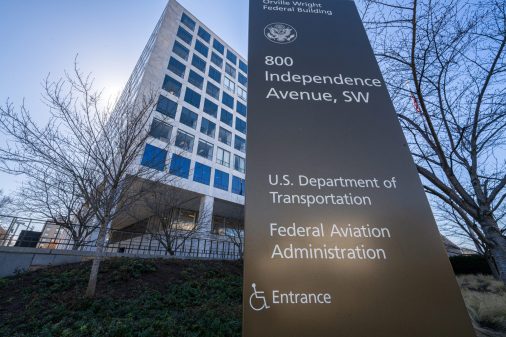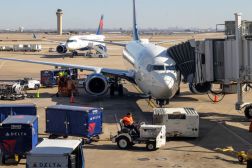FAA to upgrade contingency systems after Chicago blaze
An internal review of the Federal Aviation Administration’s response to the fire that destroyed critical telecommunications equipment at Chicago Center’s air traffic control hub in September calls on the FAA to improve its contingency systems and make upgrades that can help the agency get critical systems back online faster.
The report, released last week, stems from an incident in September when an air traffic control center employee set fire to a critical part of the Chicago Center air traffic control hub, leading to flight delays and cancellations throughout the Midwest. As part of their recommendations, the FAA’s Office of Security and Hazardous Materials Safety and the Air Traffic Organization established a process to help the agency respond to, and avoid, other potential security incidents through the establishment of more technology systems to allow air traffic to achieve 90 percent normal operations within 24 hours of a major event like the Chicago Center fire.
The report called on the agency to improve its telecommunication and automation systems so radars, voice radios, flight planning data, weather and other aeronautical information are more available if a switch to a contingency system is required. The improvement will speed up responses to incidents; however, air traffic control facilities would still be limited in operational flexibility while operating on a temporary basis. According to the report, current contingency systems are not sustainable beyond a few weeks.
And even if contingency systems are sustainable for a few weeks, it takes several days to switch operations over to a contingency plan, the report said. However, through the upgrade of telecommunication and automation systems, within 12 months, the FAA can reduce that operation switch delay from days to hours.
“Current infrastructure can be reconfigured to adapt in emergency situations, but the time it takes is measured in days, when today’s system demands that it be measured in hours,” the report said.
In addition to making contingency systems more rapidly deployable, the report called on the FAA to provide more options to reconfigure airspace in the event of a problem that could put one or more facilities out of service. Improvements in the system and acceleration of the roll out of planned technology will could increase a contingency facility’s ability to sustain operations for several months instead of weeks. The new airspace reconfigurations will be made through the re-creation of the sectors and services from the offline facility and maintained by controllers who will travel to surrounding facilities to aid in the integration of the contingency plan.
The new technology, which involves automation of flight data distribution and interfacility hand offs, will couple with acceleration of the national airspace’s voice system, which expand systemwide information management for internal weather and flight data distribution. The FAA plans to have the upgrades in place by 2018.
“This capability will significantly increase the potential to restore a much wider range of sustained disruptions, while maintaining an extremely high operational efficiency rate,” the report said.
Although the establishment of new contingency plans and the modification of existing ones fall outside the realm of technologies that will be established under the Next Generation Air Transportation System, or NextGen, the report said that the new air traffic control system, due to be in place by 2020, would build on the enhancements planned for contingency operations and provide airspace flexibility.
“This incident in Chicago is a stark reminder of the reasons the FAA is working toward an even more robust and scalable system,” the report said. “The FAA is examining how to best utilize NextGen capabilities to meet resiliency, contingency and continuity needs so that services could be made available quickly if capabilities are lost.”
In response to the Chicago Center incident, teams of workers worked around the clock for 17 days “to completely rebuild and replace the destroyed communications equipment,” the report said. All in all, more than 20 racks of equipment, 835 telecommunications circuits and more than 10 miles of cable were installed.
“We hope to never see an event like this again,” FAA Administrator Michael Huerta said in a release. “But, we must be prepared. The capabilities delivered through NextGen will allow us to maintain the highest levels of safety and restore normal operations quickly as a result of a major event like the one at Chicago Center.”





